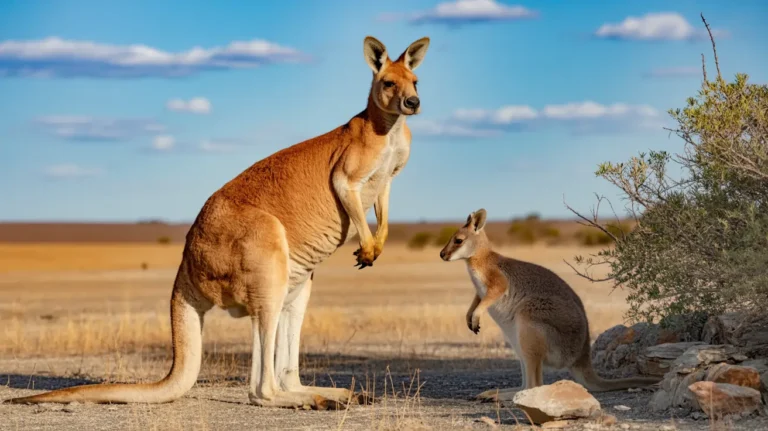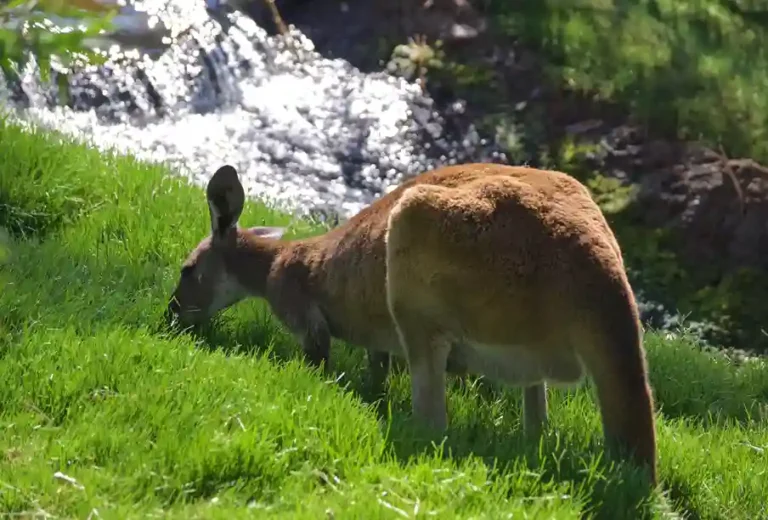Wallabies Diet: What Do Wallabies Eat?
Wallabies are herbivorous animals with a diet that primarily consists of grasses, leaves, shrubs, and fruits. Their food preferences vary depending on their species, habitat, and the availability of plant life in their environment. Understanding what wallabies eat is key to appreciating their role in the ecosystem, as well as their unique adaptations to survive in the wild. In this article, we will explore the food habits of wallabies, including their favorite plants, feeding behavior, and how their diet supports their active lifestyle.
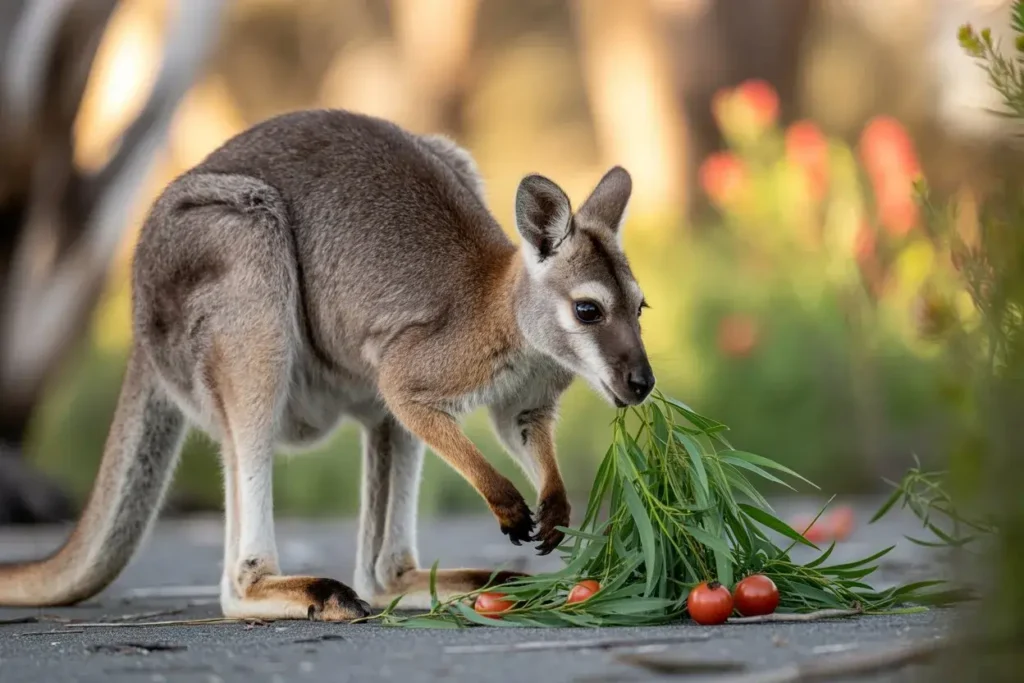
1. Grasses: A Staple in the Wallaby Diet
One of the most common food sources for wallabies is grasses. These small herbivores graze on a variety of grass species, depending on their habitat. Grasses are a rich source of fiber and nutrients, which are crucial for the wallaby’s digestion and overall health.
2. Leaves and Shrubs: Nutrient-Rich Vegetation
In addition to grasses, wallabies often eat leaves and other vegetation. These plants provide essential nutrients like vitamins, minerals, and moisture, especially when grass is scarce.
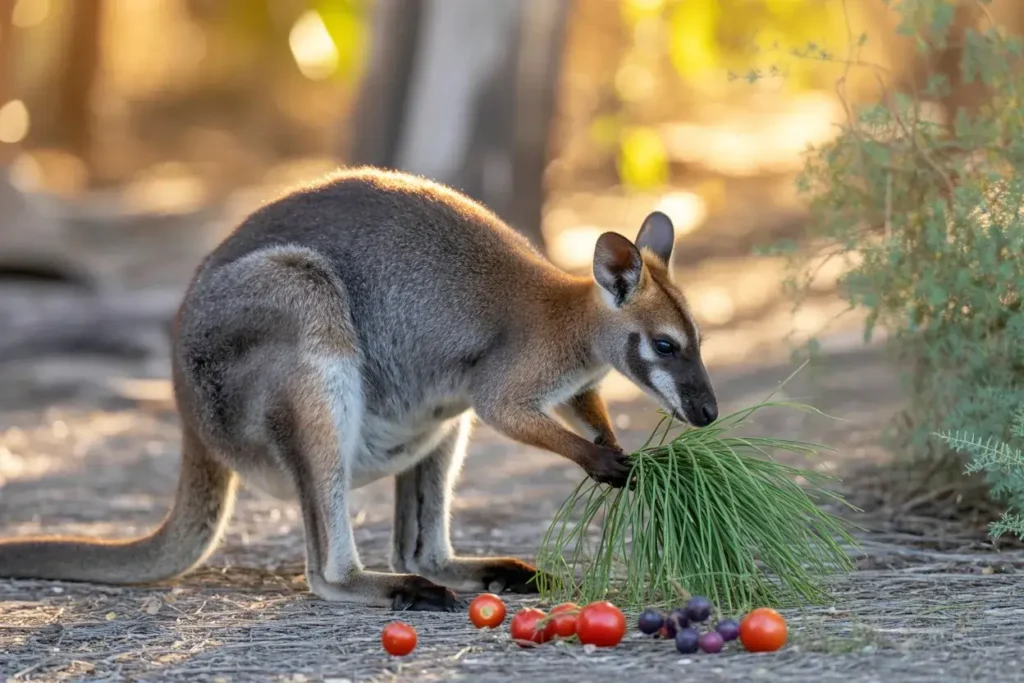
3. Fruits and Flowers: Occasional Treats
Although wallabies primarily feed on grasses and leaves, they also enjoy the occasional fruit or flower. These foods are usually consumed when available in their natural habitat, providing a sweet supplement to their typical diet.
4. How Wallabies Forage for Food
Wallabies are crepuscular creatures, meaning they are most active during the early morning and late evening hours. This feeding schedule helps them avoid the harsh midday sun and predators. Their foraging behavior is influenced by the availability of food in their habitat.
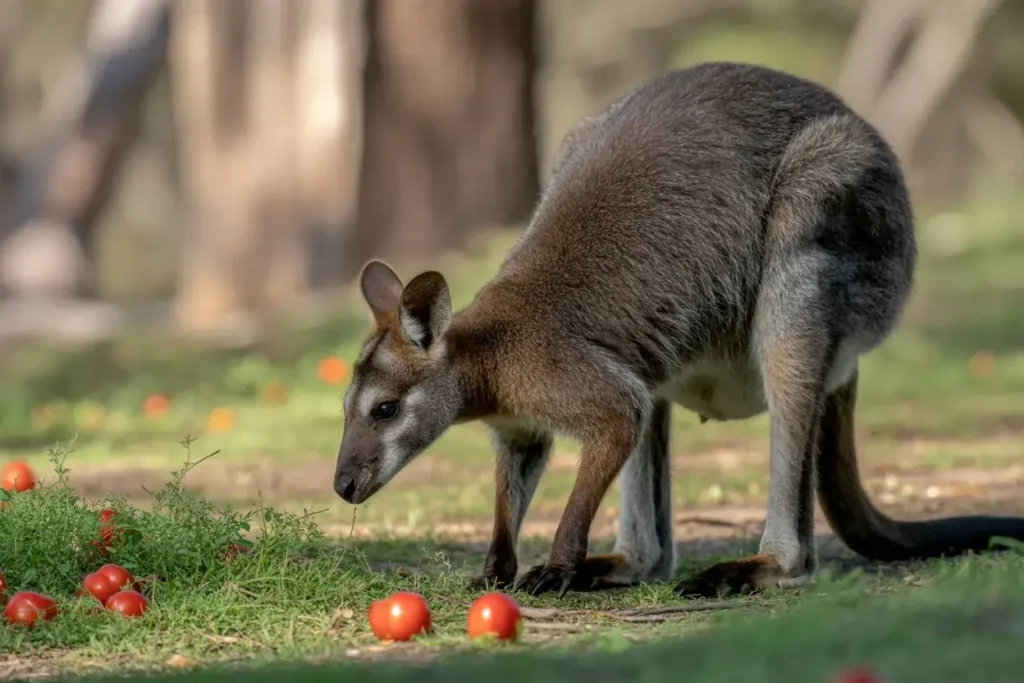
5. Water Intake and Hydration
In addition to their plant-based diet, wallabies also rely on water for hydration. They typically drink from natural water sources like streams, ponds, or waterholes. The amount of water they consume can vary depending on the climate and the moisture content of the food they eat.
6. Specialized Diets for Different Species
Different species of wallabies have slightly different dietary preferences, adapted to their specific environments. Here are a few examples:
Key Nutrients in Wallaby Diet
| Food Source | Nutritional Benefit |
|---|---|
| Grasses | High in fiber, essential for digestion |
| Leaves | Rich in vitamins, minerals, and moisture |
| Fruits | Provide sugars for energy |
| Flowers | High in nectar and additional vitamins |
| Shrubs/Small Plants | Source of calcium and other essential minerals |
FAQs About Wallaby Diet
1. Do wallabies eat the same food as kangaroos?
While both wallabies and kangaroos are herbivores, wallabies tend to eat a wider variety of plants, including softer grasses and shrubs. Kangaroos primarily graze on open grasses and typically live in more open environments.
2. How often do wallabies eat?
Wallabies feed multiple times a day, usually during early mornings and late evenings. They graze throughout these periods, resting during the hottest part of the day.
3. Can wallabies eat human food?
Wallabies should not be fed human food, as it can disrupt their natural diet and lead to health problems. Their digestive system is adapted to process certain plant-based foods found in the wild, not processed human food.
4. What do wallabies drink?
Wallabies drink water from natural sources like streams and ponds. They may also obtain some hydration from the moisture content in their food.
Conclusion
Wallabies have a diverse diet, ranging from grasses and leaves to fruits and flowers, depending on their species and habitat. Their feeding habits play a crucial role in maintaining the balance of their ecosystem, as they help control plant growth and distribute seeds. By understanding what wallabies eat, we can appreciate their role in Australian wildlife and how they have adapted to thrive in their natural environments.

